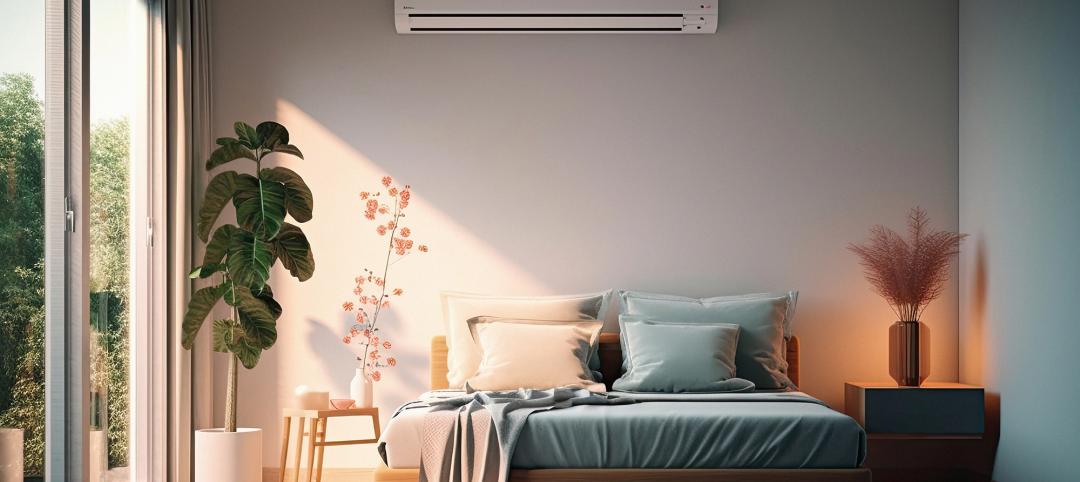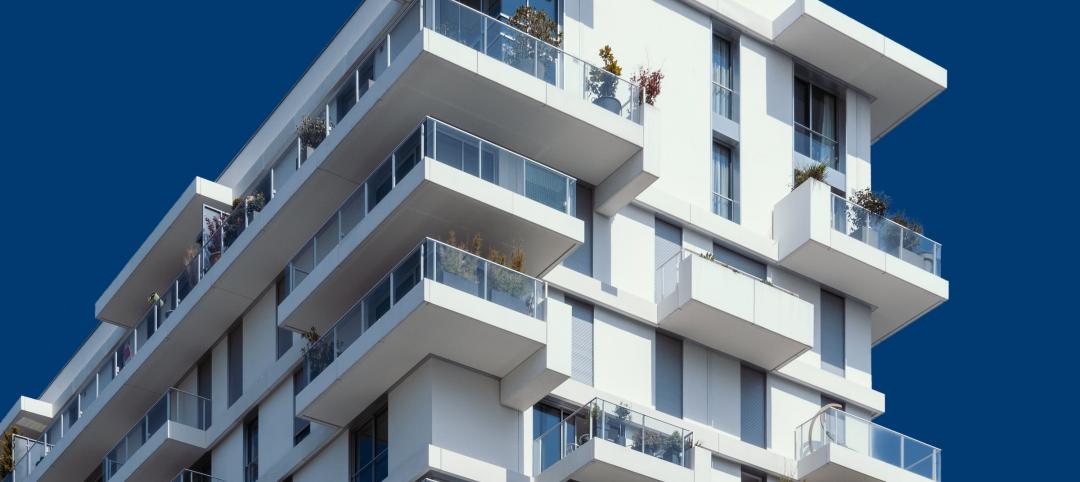The American Institute of Architects (AIA) Upjohn Research Initiative is providing up to $30,000 to five research projects that will advance sustainability in architecture. The purpose of the grant is to provide base funds for research projects that advance architectural knowledge and practice.
Grant recipients were selected by a seven-member jury comprised of members from the AIA College of Fellows and AIA Board Knowledge Committee, and according to the release this year’s selected Upjohn Research Initiative projects include:
Architects and Grid-Interactive Efficient Buildings (GEBs): The Role of the Profession in the Emerging Field of GEBs
Principal Investigator: Deane Evans, FAIA (New Jersey Institute of Technology)
A key goal of the GEBs initiative is to help buildings adapt to and, at the same time, reduce the impacts of climate change. As a collaborative effort between a university-based research center, a state energy-incentive program, and a state AIA component’s Committee on the Environment (COTE), the project intends to better inform architects about GEBs. The results will be incorporated into an online educational toolkit designed to help architects understand the practical, real-world implications of GEBs on their practices.
From Waste to Biodegradable Structures with Local Fungi Species
Principal Investigators: Benay Gürsoy Toykoç, PhD (Penn State); John A. Pecchia, PhD (Penn State); Ali Ghazvinian (Penn State)
Collaborators: Alale Mohseni (Penn State); Natalie Walter (Penn State)
Interest from the architecture community in the sustainable features of mycelium-based materials is growing. As a collaboration among architecture, mushroom science, and computational design, this interdisciplinary research project aims to design and build two large-scale structures, MycoCreateII and MycoPrint, to study the use of mycelium-based composites as a load-bearing material. MycoCreateII will be a fully biodegradable funicular structure with load-bearing components made of mycelium-based composites. MycoPrint will be a shell structure with 3D-printed mycelium-based components cultivated on cardboard and paper waste.
The Future of Green Infrastructure: Measuring and Designing the Built Environment for Pedestrian and Bicycle Activities in Dallas-Fort Worth
Principal Investigators: Hyesun Jeong, PhD, Assoc. AIA (University of Texas at Arlington); Matthew Ables (Arup)
Collaborators: Brian Hammersley (Hammersley Architecture); Meghna Tare (University of Texas at Arlington); Lawrence Agu, Assoc. AIA (City of Dallas)
Using GIS-based data analysis and field study, this research project will investigate how the built environment is conducive to pedestrian and cycling activities in Dallas-Fort Worth. The project team will generate design prototypes and strategies that transform grey-infrastructure into permeable green-infrastructure to envision a more walkable, ecological, and healthier environment in community areas. The outcome of this research and design project may serve as a decision-making tool for stakeholders such as architects, planners, city officials, developers, and community organizations in pursuit of sustainable development, mobility infrastructure planning, stormwater management, and decarbonization efforts.
Priority Green for Community Benefit: A Framework for Tailoring Entitlement Benefits to Neighborhood-specific Priorities Around Climate Change Mitigation, Adaptation, and Equity
Principal Investigator: Adele Houghton, AIA (Biositu)
Local permitting pathways may be more effective levers for mitigating and adapting to climate change, addressing chronic disease, and improving equity if they are tailored to neighborhood-level environmental and human health needs. Generated through a series of charettes, this research project will develop a Priority Green framework that architects can use with local officials to show how building and site design that is responsive to neighborhood environmental exposures, community health risk factors, and the social determinants of health can measurably contribute to advancing their community’s climate action plan and other local public health priorities.
Synergies between Ultra-Low-Energy Buildings, Microgrids, and Direct Current
Principal Investigators: Lisa White (Passive House Institute US (PHIUS)); Graham Wright, PhD (Passive House Institute US (PHIUS))
Collaborator: Walter Grondzik, PE (Ball State University)
This study will assess the feasibility and performance benefits of linking passive building design guidelines with a city-block microgrid, simulated in Milwaukee and composed of 20-30 residential buildings. It will develop an architect’s guide to analyzing and designing such blocks to manifest a resilient, low-emissions future. The goal of this project is to create a template for architects and other design professionals to incorporate both passive building strategies and microgrid design strategies into their projects to achieve optimal carbon performance.
Related Stories
Industry Research | Nov 17, 2023
Air conditioning amenity sees largest growth in Pacific Northwest region
The 2024 Renter Preferences Survey Report sheds light on the demographics, lifestyle, connectivity needs, and more for the renters of today. At the top of this list—the feature that respondents are “interested in” or “won't rent without”—is air conditioning.
Multifamily Housing | Nov 9, 2023
Multifamily project completions forecast to slow starting 2026
Yardi Matrix has released its Q4 2023 Multifamily Supply Forecast, emphasizing a short-term spike and plateau of new construction.
MFPRO+ Special Reports | Oct 27, 2023
Download the 2023 Multifamily Annual Report
Welcome to Building Design+Construction and Multifamily Pro+’s first Multifamily Annual Report. This 76-page special report is our first-ever “state of the state” update on the $110 billion multifamily housing construction sector.
Market Data | Oct 23, 2023
New data finds that the majority of renters are cost-burdened
The most recent data derived from the 2022 Census American Community Survey reveals that the proportion of American renters facing housing cost burdens has reached its highest point since 2012, undoing the progress made in the ten years leading up to the pandemic.
Giants 400 | Oct 23, 2023
Top 115 Multifamily Construction Firms for 2023
Clark Group, Suffolk Construction, Summit Contracting Group, Whiting-Turner Contracting, and McShane Companies top the ranking of the nation's largest multifamily housing sector contractors and construction management (CM) firms for 2023, as reported in Building Design+Construction's 2023 Giants 400 Report. Note: This ranking factors revenue for all multifamily buildings work, including apartments, condominiums, student housing facilities, and senior living facilities.
Giants 400 | Oct 23, 2023
Top 75 Multifamily Engineering Firms for 2023
Kimley-Horn, WSP, Tetra Tech, Olsson, and Langan head the ranking of the nation's largest multifamily housing sector engineering and engineering/architecture (EA) firms for 2023, as reported in Building Design+Construction's 2023 Giants 400 Report. Note: This ranking factors revenue for all multifamily buildings work, including apartments, condominiums, student housing facilities, and senior living facilities.
Giants 400 | Oct 23, 2023
Top 190 Multifamily Architecture Firms for 2023
Humphreys and Partners, Gensler, Solomon Cordwell Buenz, Niles Bolton Associates, and AO top the ranking of the nation's largest multifamily housing sector architecture and architecture/engineering (AE) firms for 2023, as reported in Building Design+Construction's 2023 Giants 400 Report. Note: This ranking factors revenue for all multifamily buildings work, including apartments, condominiums, student housing facilities, and senior living facilities.
Senior Living Design | Oct 19, 2023
Senior living construction poised for steady recovery
Senior housing demand, as measured by the change in occupied units, continued to outpace new supply in the third quarter, according to NIC MAP Vision. It was the ninth consecutive quarter of growth with a net absorption gain. On the supply side, construction starts continued to be limited compared with pre-pandemic levels.
Warehouses | Oct 19, 2023
JLL report outlines 'tremendous potential' for multi-story warehouses
A new category of buildings, multi-story warehouses, is beginning to take hold in the U.S. and their potential is strong. A handful of such facilities, also called “urban logistics buildings” have been built over the past five years, notes a new report by JLL.
Contractors | Oct 19, 2023
Crane Index indicates slowing private-sector construction
Private-sector construction in major North American cities is slowing, according to the latest RLB Crane Index. The number of tower cranes in use declined 10% since the first quarter of 2023. The index, compiled by consulting firm Rider Levett Bucknall (RLB), found that only two of 14 cities—Boston and Toronto—saw increased crane counts.

















